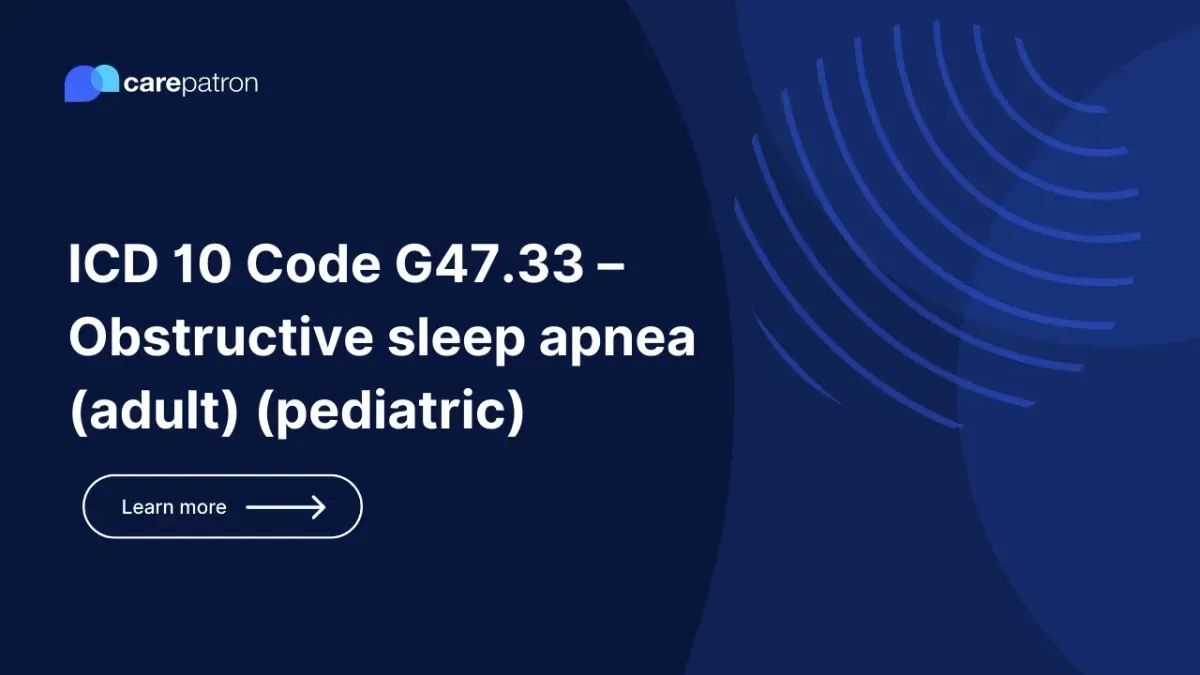
G47.33 – Obstructive sleep apnea (adult) (pediatric)
Understand the ICD-10-CM code G47.33 - obstructive sleep apnea (adult) (pediatric), symptoms, treatment, billability, etc. Discover how to use this code with this guide.
Use Code
Commonly asked questions
You can use G47.33 when the patient’s cause of sleep apnea is because of an obstruction in the airways and not because the patient’s brain isn’t sending the right signals to the muscles in charge of breathing.
Yes. G47.33 is a billable diagnosis that can be used for reimbursements.
Common treatments for G47.33 obstructive sleep apnea include continuous positive airway pressure (CPAP) therapy, oral appliance therapy by a licensed dentist, and lifestyle modifications like weight loss or positional therapy. In severe cases, surgical intervention may be recommended, especially when other therapies fail to address sleep apnea symptoms and daytime fatigue.
EHR and practice management software
Get started for free
*No credit card required
Free
$0/usd
Unlimited clients
Telehealth
1GB of storage
Client portal text
Automated billing and online payments
